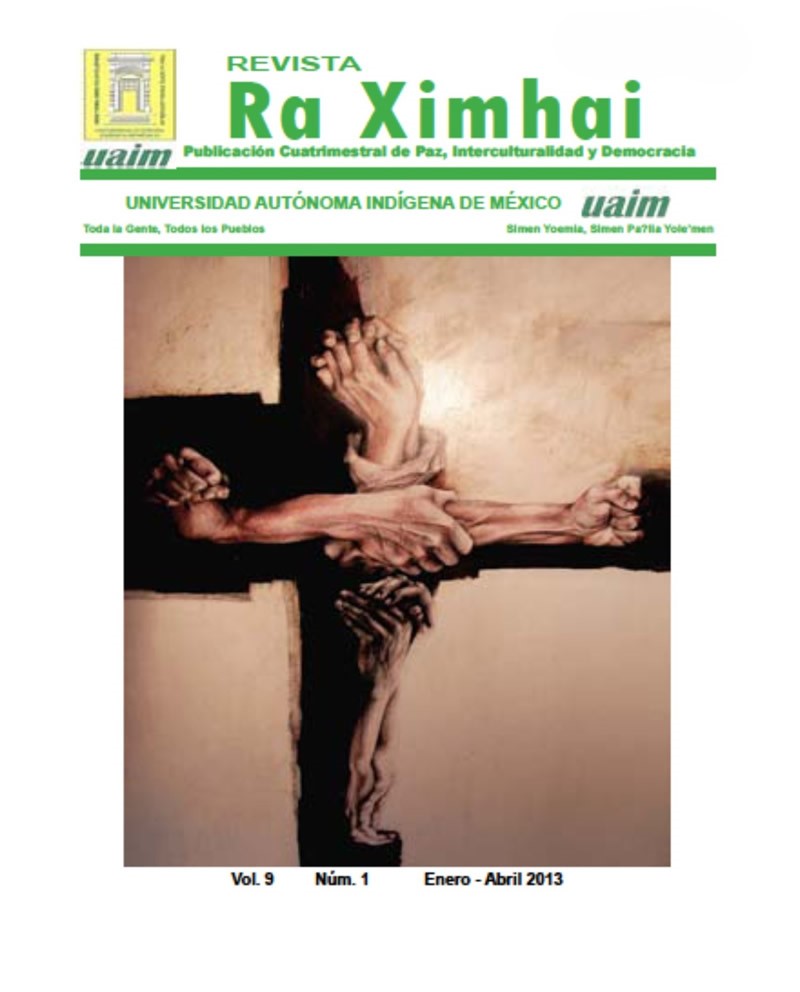The social construction of the temazcal bath in two communities of the Oaxacan Mixtec: Santiago Yolomecatl and San Andrés Chicahuaxtla
DOI:
https://doi.org/10.35197/rx.09.01.e.2013.15.avKeywords:
temazcal, Oaxacan Mixtec, constructivist analysisAbstract
The temazcal bath is a tradition with pre-Hispanic roots that is still practiced in rural and indigenous communities in our country. The studies carried out on the temazcal have focused on its construction and operation methods, however, the multiple therapeutic benefits that the temazcal bath provides to the human body, and to women in particular, have not been sufficiently documented. In this case, two communities in the Mixteca region of Oaxaca were studied: Santiago Yolomecatl and San Andrés Chicahuaxtla. In this study, a questionnaire was applied to 20% of families in each of the communities, a questionnaire to allopathic doctors and six life stories to temazcaleras. The results indicate a coincidence between patients and doctors in the study populations regarding the medicinal uses of the temazcal bath: after childbirth and for muscle pain. However, the interviewed temazcal women indicate that the diseases that this bath cures are: tonsillitis, flu, rheumatism, scars, muscle pain, after childbirth and colic. For their part, the doctors support the idea of maintaining the temazcal bath because it is a curative means to treat diseases through steam and faster recovery of the body. The constructivist analysis of the responses collected in questionnaires and life stories shows that the medicinal uses of the temazcal, before being recognized as such, go through a process of evaluation, filtration and social construction. This process of acceptance, perception and recognition occurs through rules of knowledge, ideological connotations, norms and social symbols.
Downloads
References
Bartolomé, Miguel Alberto y Mabel, Alicia. 2008. El pueblo ñu savi. Los mixtecos, en Arqueología Mexicana, vol. XV, núm. 90, Marzo-abril, México, pp. 68-73.
Berger, Peter y Luckmann, Thomas. 2003. La construcción social de la realidad. Amorrortu Editores.
Buenos Aires, Argentina.
Cockerham, William. 2002. Sociología de la medicina. Octava edición. Prentice Hall. Madrid, España. Comisión Nacional para el Desarrollo de los Pueblos Indignas. Monografías, disponible en:
www.cdi.gob.mx/monografias/.html, (Fecha de consulta: 24/febrero/2012).
Mindek, Dubravka. 2003. Mixtecos. Comisión Nacional para el Desarrollo de los Pueblos Indígenas- PNUD. México.
Hernández, Fidel y Ramos, Víctor Manuel. 2006. Monografía Yuma’ Niko Ni Nej Si A’min Nanj Nïn’ïn Chicahuaxtla y los Pueblos Trikis. Escuela Normal Bilingüe de Oaxaca. México.
INEGI (2005). II Conteo de Población y Vivienda 2005. México.
Lewin, Pedro y Sandoval, Fausto. 2007. Triquis. Comisión Nacional para el Desarrollo de los Pueblos Indígenas-PNUD. México.
Lillo, Vincensa. 2007. El temazcalli mexicano. Su significación simbólica y su uso psicoterapéutico pasado y presente. Plaza y Valdez. México.
Plummer, Ken y John, Macionis. 1999. Sociología. Prentice Hall. Madrid, España.
Schwartz, Howard y Jarry, Jacobs. 2003. Sociología cualitativa. Método para la reconstrucción de la realidad, Trillas, México.
Downloads
Published
How to Cite
Issue
Section
License
Copyright (c) 2013 Alberto Valdés Cobos, Anayelit Cruz Galicia

This work is licensed under a Creative Commons Attribution-NonCommercial 4.0 International License.
Usted es libre de:
- Compartir — copiar y redistribuir el material en cualquier medio o formato
- Adaptar — remezclar, transformar y construir a partir del material
- La licenciante no puede revocar estas libertades en tanto usted siga los términos de la licencia
Bajo los siguientes términos:
- Atribución — Usted debe dar crédito de manera adecuada , brindar un enlace a la licencia, e indicar si se han realizado cambios . Puede hacerlo en cualquier forma razonable, pero no de forma tal que sugiera que usted o su uso tienen el apoyo de la licenciante.
- NoComercial — Usted no puede hacer uso del material con propósitos comerciales .
- No hay restricciones adicionales — No puede aplicar términos legales ni medidas tecnológicas que restrinjan legalmente a otras a hacer cualquier uso permitido por la licencia.








